- Consumer & Market Trends Newsletter
- Posts
- Embrace Your Inexperience: How Amateurs Built a $1.7 Billion Empire
Embrace Your Inexperience: How Amateurs Built a $1.7 Billion Empire
Being an amateur in business isn't a weakness—it might be your superpower.

Why Amateurs Might Be the Real MVPs of Innovation
When you hear the word "amateur," what comes to mind? Maybe it’s someone fumbling through a task, learning as they go. But here’s the twist: being an amateur might actually be your biggest advantage. History is packed with examples of amateurs shaking up industries, and Snapple’s story is one of the best.
Snapple wasn’t born in a corporate boardroom or crafted by beverage experts. It started in 1972 with three childhood friends — Leonard Marsh, Hyman Golden, and Arnold Greenberg — who had no experience in the beverage industry. Their original goal? Selling juice to health food stores. The name Snapple itself came from a failed experiment with fizzy apple juice that caused bottle caps to shoot off like rockets. Instead of scrapping the name, they embraced it — because why not? That quirky, amateur spirit became their brand’s DNA1.
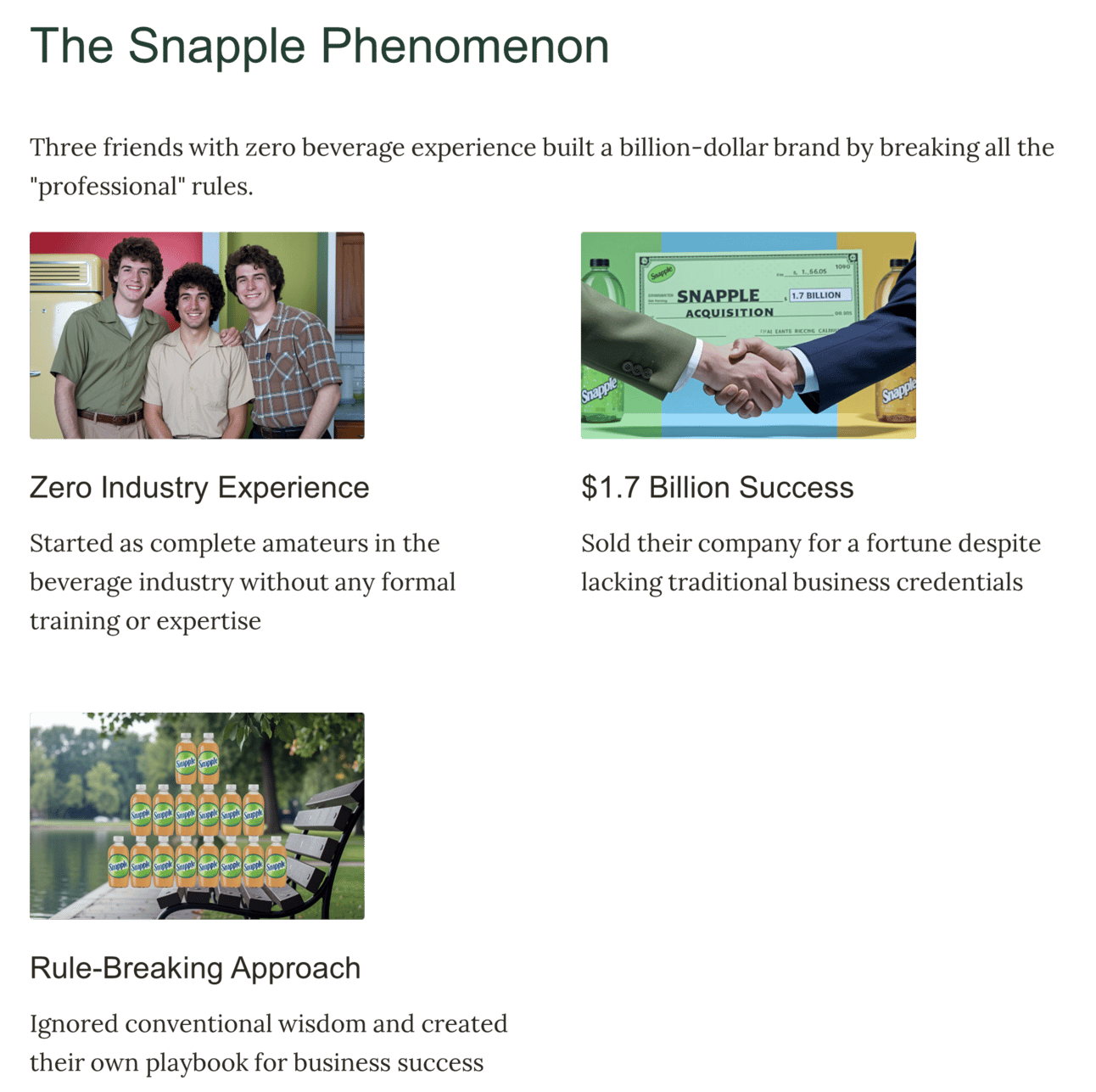
The Snapple Playbook: Breaking All the Rules
Here’s what makes Snapple’s story so fascinating: they didn’t play by the rules. In fact, they didn’t even know what the rules were. And that ignorance turned out to be their superpower.
Listening to Customers:
Snapple didn’t rely on focus groups or consultants to tell them what flavors would sell. Instead, they listened to actual customers — through fan letters and conversations at corner stores. That’s how they ended up creating flavors like Kiwi Strawberry, which industry professionals thought was too “weird” but customers loved1.Grassroots Marketing:
Forget slick ad campaigns; Snapple leaned into authenticity. Wendy Kaufman, a Snapple employee who was already answering fan mail as a personal mission, became “The Snapple Lady” in their commercials. She read customer letters on camera, creating a genuine connection that big brands couldn’t replicate1.Building Relationships:
Instead of partnering with marketing agencies or industry experts, Snapple focused on local distributors and store owners — the people who actually sold their products. This grassroots approach helped them grow from $3 million in sales in 1986 to $700 million by 19941.
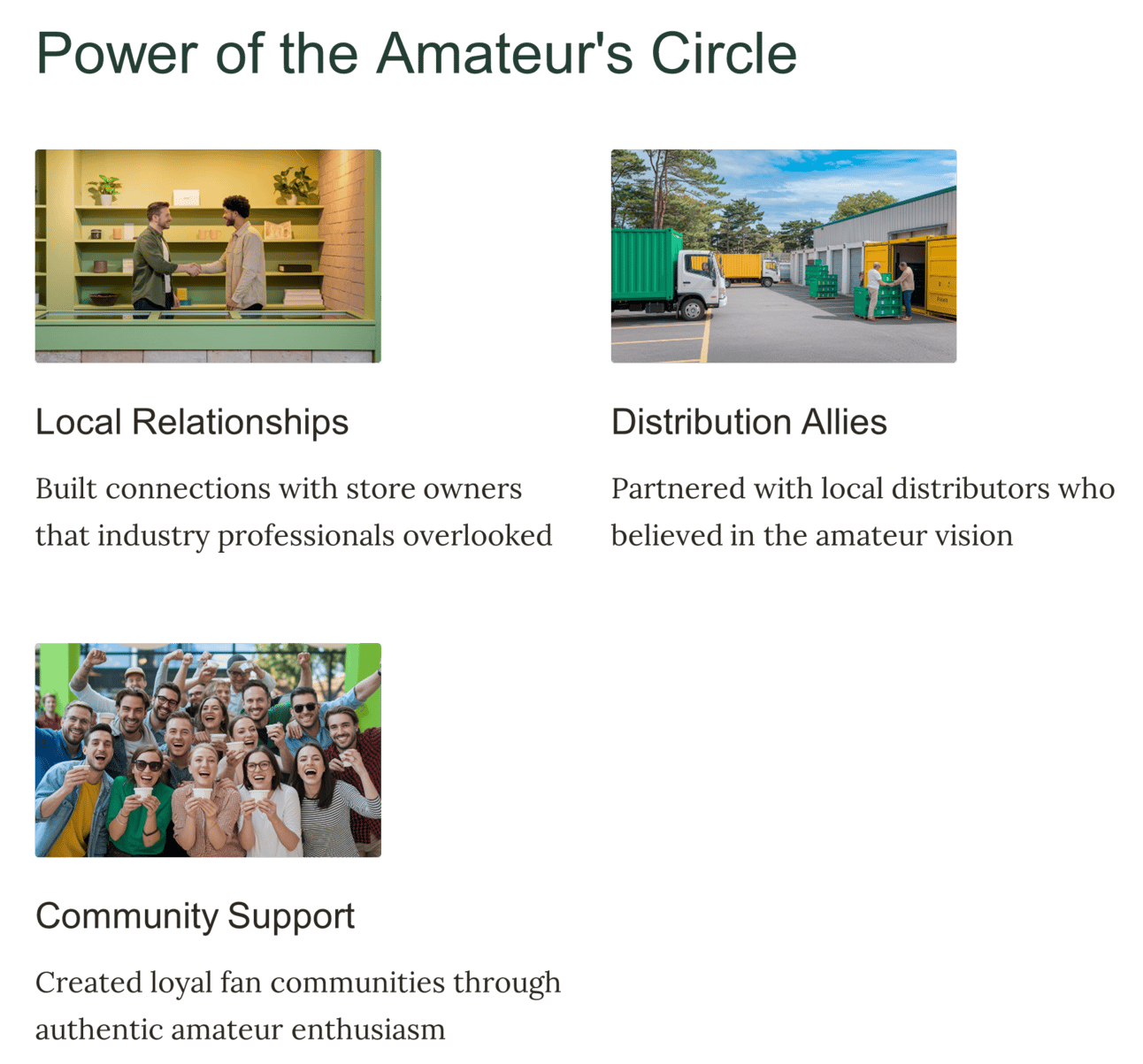
Why Amateurs Have an Edge
Here’s the thing about amateurs: they don’t know what not to do. Professionals often get stuck in their own expertise, weighed down by all the risks and rules they’ve learned over time. Amateurs? They’re free to experiment and take bold risks because they don’t have preconceived notions holding them back.
Steve Jobs captured this perfectly when he said, “It’s really hard to design products by focus groups. A lot of times, people don’t know what they want until you show it to them”2. Jobs understood that innovation often comes from ignoring conventional wisdom and trusting your instincts — something amateurs excel at.
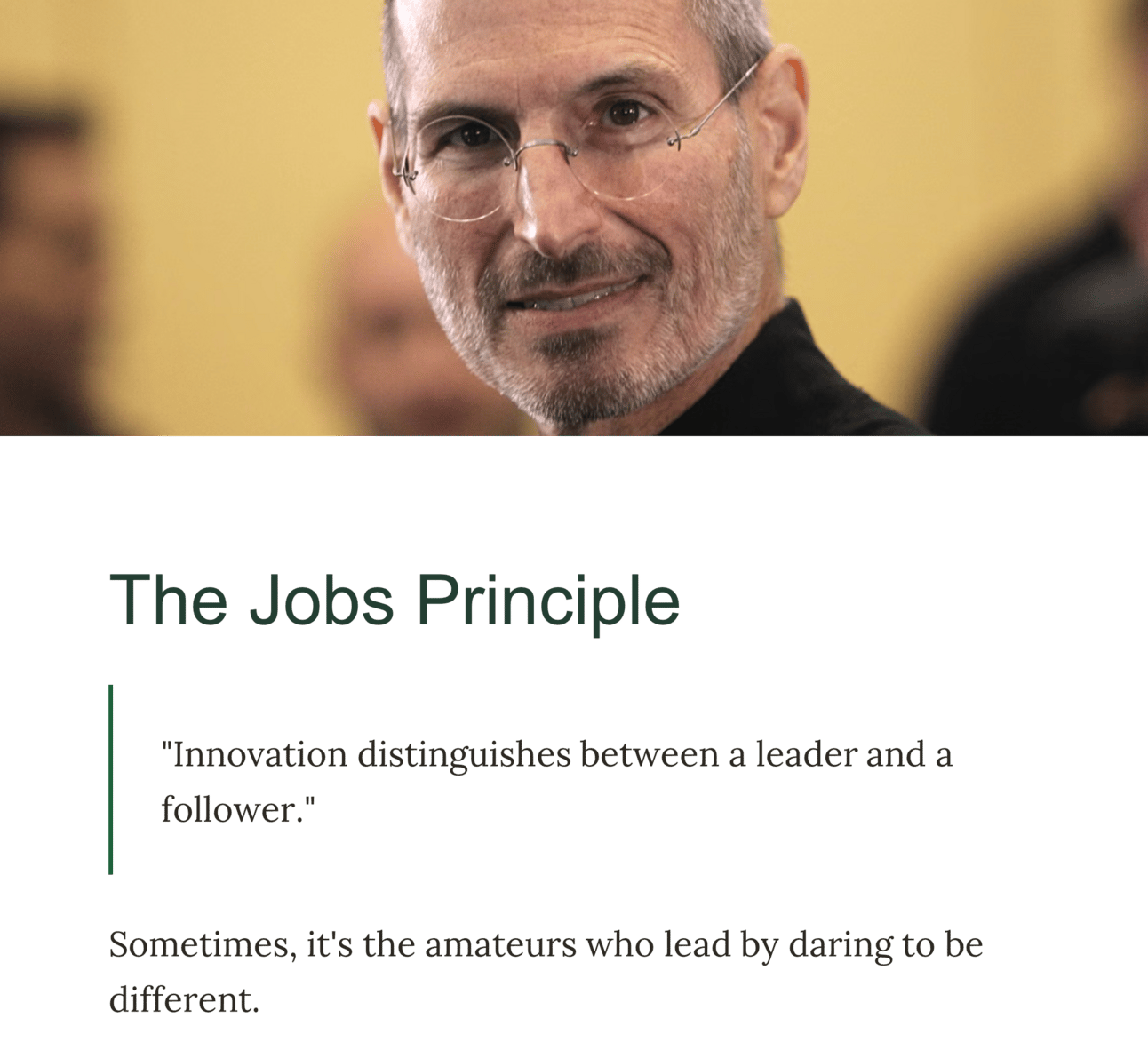
Jeff Bezos echoed this sentiment when reflecting on Amazon’s failures: “The big winners pay for thousands of failed experiments”3. Amateurs aren’t afraid to fail because failure is just part of the process.
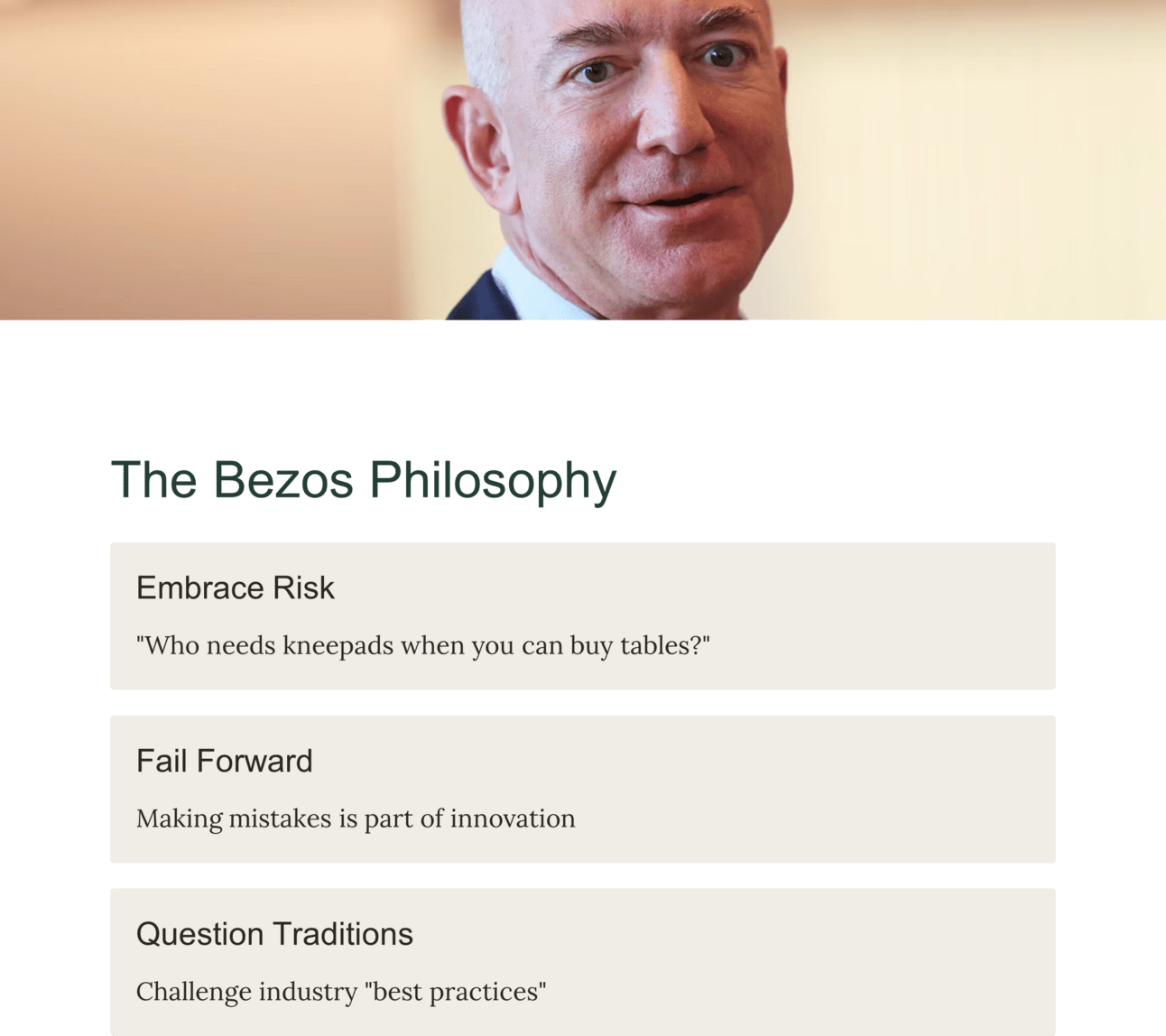
The Power of Risk-Taking
Snapple’s founders didn’t play it safe — they took risks that professionals might have avoided entirely. From quirky flavors to unconventional marketing strategies, their willingness to embrace the unexpected paid off big time.
As Woody Allen once quipped, “If you’re not failing occasionally, you’re probably not doing anything very innovative”4. Failure isn’t just inevitable; it’s essential for growth.
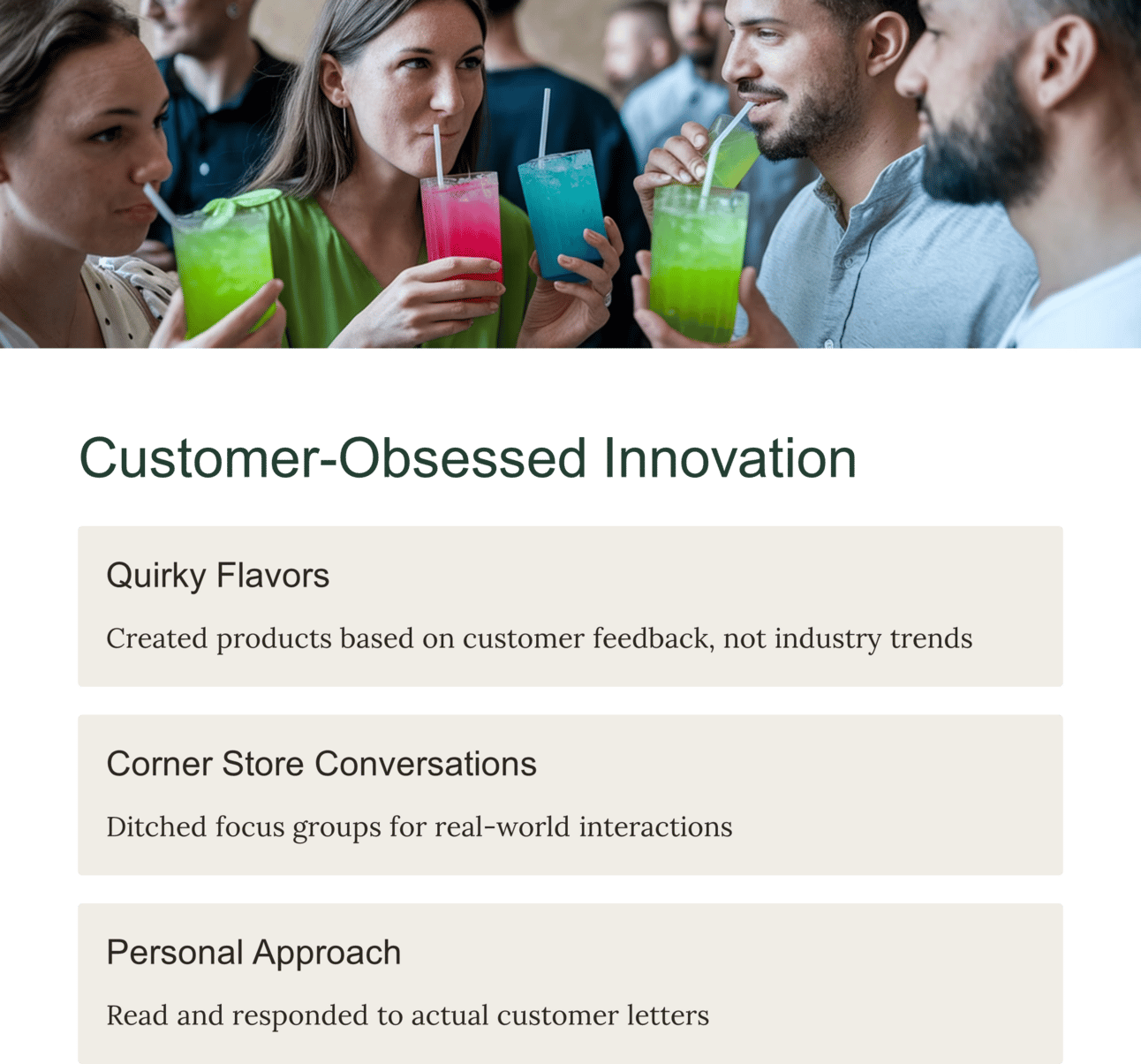
Real Talk: What This Means for You
If you’ve ever felt like you’re not “qualified” enough to chase your big idea, let Snapple be your reminder that credentials aren’t everything. What matters more is passion, curiosity, and the courage to try things your way — even if it feels “wrong” by professional standards.
Snapple didn’t become a billion-dollar brand because its founders were experts; it succeeded because they were amateurs who dared to think differently. They didn’t follow the rules — they rewrote them.
So go ahead: embrace your inner amateur. Break some rules. Take some risks. Build your own power circle — not with experts who tell you what can’t be done but with people who believe in what can be done.
Conclusion
Snapple’s story proves that being an amateur isn’t a liability; it’s an advantage. They didn’t need fancy degrees or industry experience to create something extraordinary — just a willingness to listen, experiment, and take risks.
As Steve Jobs once said: “Innovation distinguishes between a leader and a follower”2. And let’s face it — leaders aren’t afraid to color outside the lines.
So next time you doubt yourself, remember this: amateurs built Snapple into a billion-dollar brand by ignoring every professional rule in the book. What could you build if you did the same?
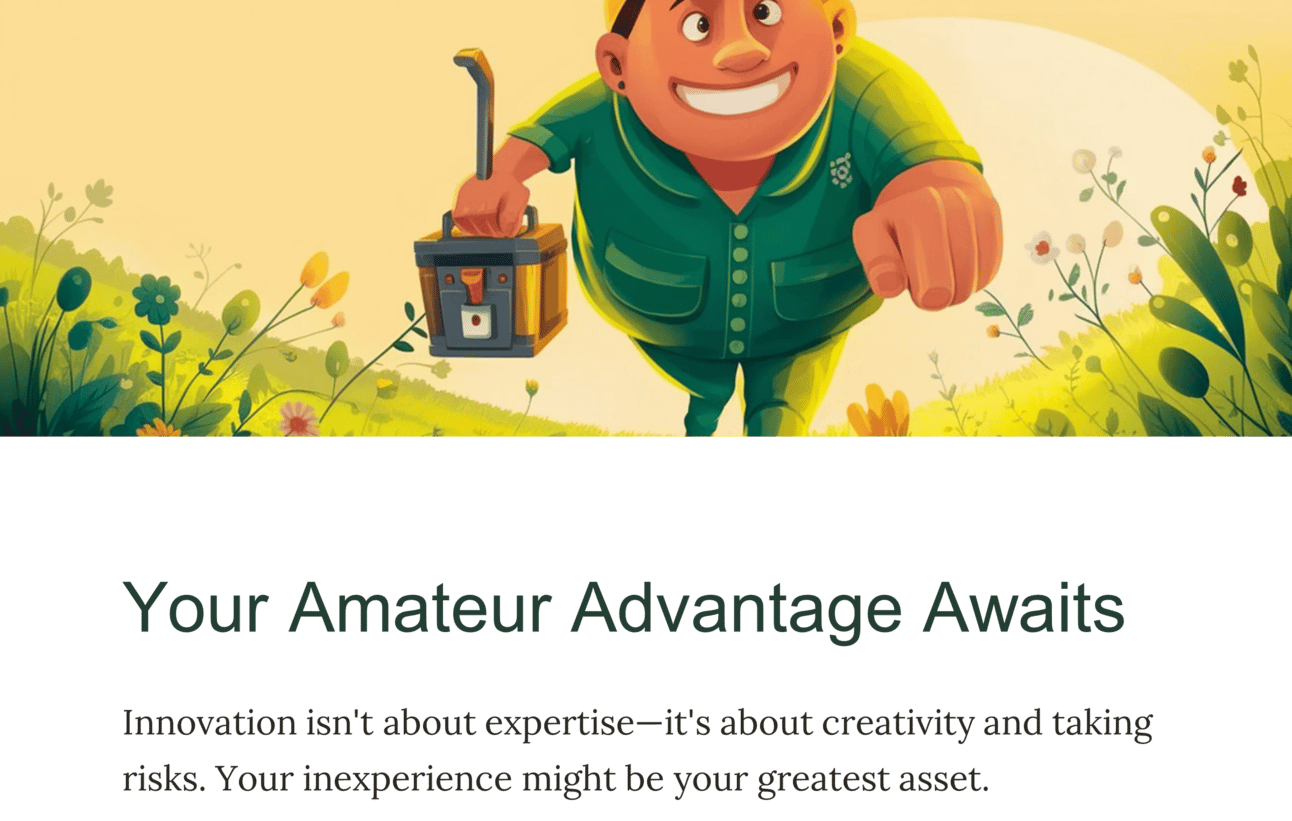
Looking for Sales and Distributions Solutions that work? Click Here
Sources
BackThen History: The History of Snapple
Indigo9 Digital: Steve Jobs Quotes on Innovation
Geoff Blades Blog: Jeff Bezos Quotes on Risk-Taking
TodayInSci.com: Woody Allen Quotes